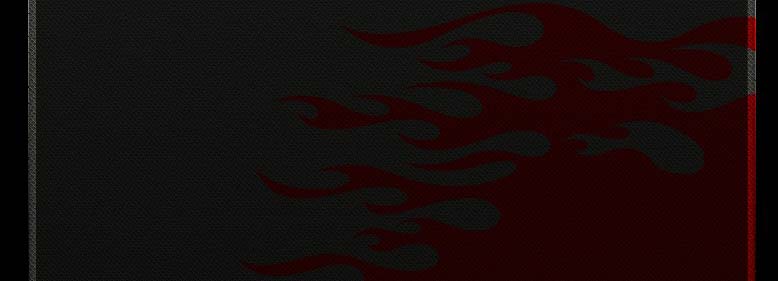


Detail package descriptions:
Express: best for freshening up in between full details or as an economical solution when a standard or Premium service isn't in the budget but you still want some protection on your vehicle.
Standard: a twice per year maintenance service similar to what most high-volume shops consider to be a "full exterior detail" but with more time taken with claying/decontamination. The client can choose from multiple wax and sealant options, though the polish/wax is standard for bumping up the level of gloss and adding protection.
Standard: a twice per year maintenance service similar to what most high-volume shops consider to be a "full exterior detail" but with more time taken with claying/decontamination. The client can choose from multiple wax and sealant options, though the polish/wax is standard for bumping up the level of gloss and adding protection.
Premium Detail service descriptions:
Bronze: this is basically what I think a standard detail should be to keep a vehicle looking like new if properly maintained. Added services are adding a machine polishing step and more attention to the paint in the door and trunk jambs. Most wear from car washes and daily use is polished away, as long as the owner didn't frequent the cloth car washes that often are very hard on the paint. Extra attention is paid to make sure the client's car stands out in the crowd with gloss ad reflectivity that aren't achieved at a high-volume shop.
Silver: this is a restorative package to bring a car up to near new condition using an additional buffing step to remove most swirls, medium scratches, oxidation, etching, and water spotting. Most clients who have never come to me before don't realize the defects in their paint that are keeping it from looking top notch.
Gold: this is everything I can do to bring the paint back as close to new as is possible by adding additional steps to correct paint defects such as water spot or bird dropping etching and deeper swirls and scratches. This is a process that shouldn't need to be done again if the vehicle is maintained properly.
Silver: this is a restorative package to bring a car up to near new condition using an additional buffing step to remove most swirls, medium scratches, oxidation, etching, and water spotting. Most clients who have never come to me before don't realize the defects in their paint that are keeping it from looking top notch.
Gold: this is everything I can do to bring the paint back as close to new as is possible by adding additional steps to correct paint defects such as water spot or bird dropping etching and deeper swirls and scratches. This is a process that shouldn't need to be done again if the vehicle is maintained properly.
Other descriptions:
Opti-Coat: a clear resin coating similar to the clear coat on your vehicle. It is most commonly used on paint, which is what is included in the price, but it can also be applied to headlights, wheels, plastic trim, bumpers and other metal surfaces. It is permanent and is only removed by machine polishing. It provides an additional barrier between the elements and your paint, adding additional UV protection and water sheeting ability. The paint will come clean easier after application, which means reduced chance of instilling scratches from washing. The is no need to wax over it- it has a glassy, shiny look that will blow your mind and keeps trim looking like new.
Hand Wash: Machine washing is harsh on a paint finish. They often caused light scratching, or "swirling", in the paint that give the car a dull look and looks awful in bright sun. I use an ultra-plush microfiber wash mitt, using gentle pressure on the paint to avoid instilling swirls.
Machine polishing and compounding: I use 2 different types of buffers and several different compounds and polishes and pads to most effectively correct defects in your paint. Every paint has different properties and has varying amounts of wear that I have to be mindful of. I use both a direct-drive rotary buffer and a dual-action orbital buffer. Both are safe in accomplished hands. On each paint where I will be doing polishing or compounding work, I perform a "test spot" to determine what products/pads/machines achieve the best finish possible.
Clay/decontamination: Clay is a Silly-Putty-like material that, with a lubricant, helps remove above-surface contaminants without harming the paint. Decontamination just means removing all foreign matter from the vehicle's surfaces. This can be bird droppings, sap, tar, industrial fallout, iron specks, road paint, rail dust, rust stains, and anything else that doesn't come off with washing.
Sealant: functions like a wax, but lasts longer and still produces a high quality shine. I usually apply by orbital buffer, as this safely provides the a nice even coat of protection. A sealant easily lasts for 6 months in most weather and helps keep dirt, grime and salt from sticking to the paint as much as an unprotected surface.
Carpet shampoo/extract: after pre-treating with a cleaner and agitating with a brush, the extractor shoots hot water into the fibers to further help loosen dirt and grime and then vacuums it all back out, leaving the carpet and upholstery fresh and clean. This process usually requires leaving your windows cracked open overnight to completely dry
Steaming: A steamer shoots 200 degree steam to help melt away dirt and grime off or pretty much any surface, and I use it on door jambs, interior panels, carpet/upholstery, headliners, etc. Steaming dries very quickly, so I often choose this method of cleaning cloth upholstery and carpet if not heavily soiled.